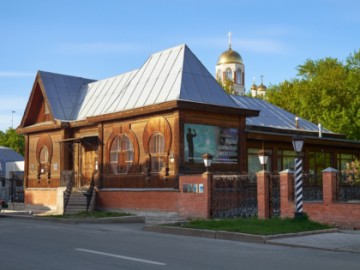Yekaterinburg — the Capital of the Urals
Yekaterinburg is the capital of the Urals, an industrial and scientific center of Russia, one of the country’s principal literary cities. Its history revives in monuments, monasteries and museums. People come here to look at the unique Ural semiprecious stones, learn the history of the Urals’ commercial development, view the place of the murder and burial of the remains of the last Emperor of Russia Nicholas II and his family, and, of course, taste the local specialty — Ural dumplings, which have become a real meme.
Отели города Yekaterinburg
See all
Restaurants

Double Grill and Bar
Restaurant • Bar • Catering
+7 343 2786070
Payment methods:

The Myata cafe-bar
Restaurant • Bar • Café
+7 343 2159060
Payment methods:

Akvarel
Patisserie • Café
+7 343 3101288
Payment methods:

Balkanskij Gurman
Restaurant
+7 343 2617788
All sights in YekaterinburgSee all
Places of interest in Yekaterinburg

Leaning Tower of Nevyansk
Architectural Monuments • Other places

Visotsky Business Center
Architectural Monuments • Other places

"Ganina Yama" friary
Architectural Monuments • Temples and places of worship • Abbeys and Monasteries • Other places

Literary Quarter
Museums and Exhibitions

Nizhnyaya Sinyachikha
Other places

QWERTY Monument
Other places

Museum of History of Science and Equipment of the Sverdlovsk Railroad
Museums and Exhibitions • Other places

Rastorguyev-Kharitonov Palace
Architectural Monuments • Other places
Nearby
Cities near Yekaterinburg







 Museums and Exhibitions
Museums and Exhibitions
 Parks and recreation
Parks and recreation
 Other places
Other places
 Architectural Monuments
Architectural Monuments
 Temples and places of worship
Temples and places of worship